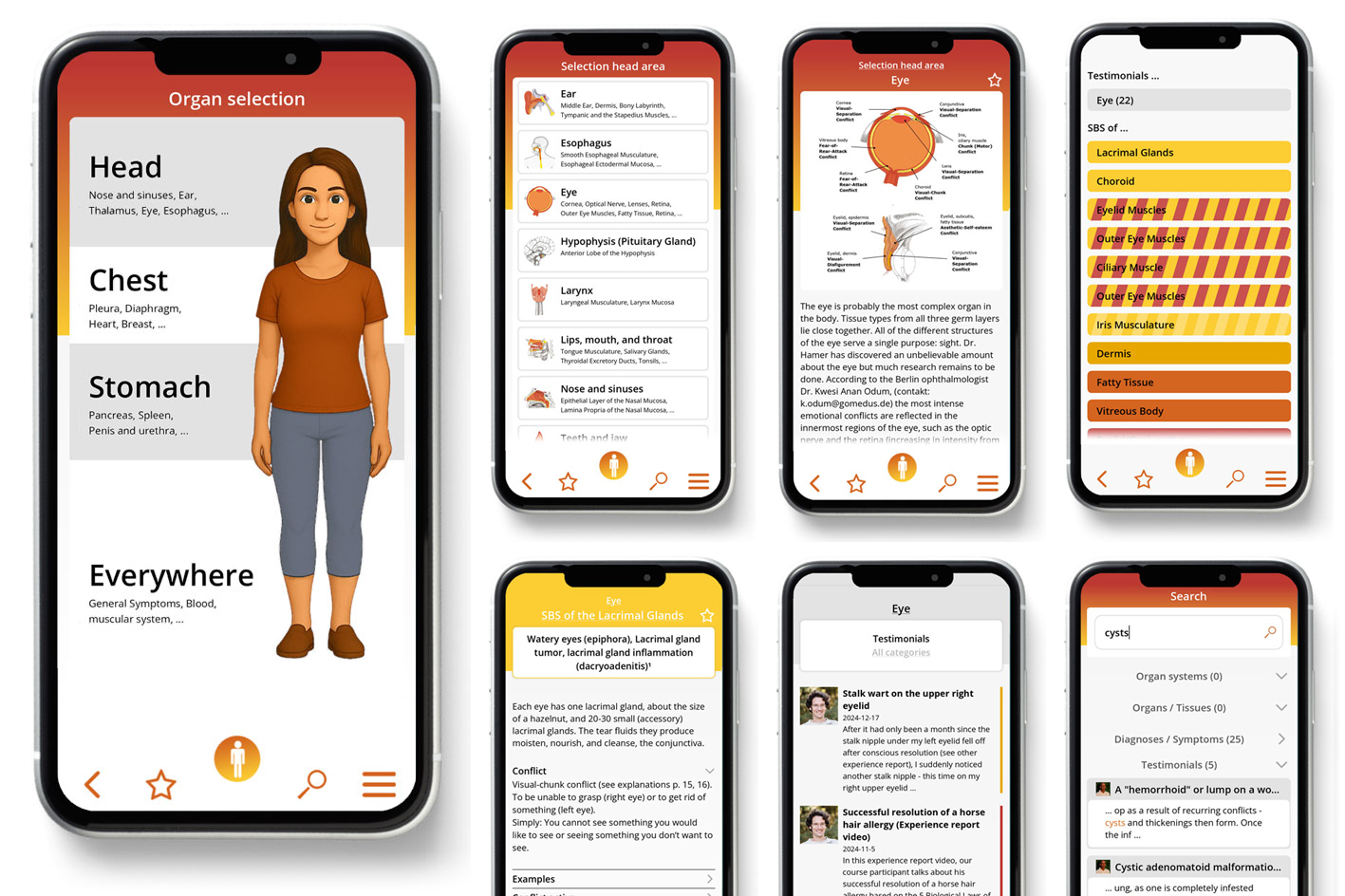 The information on this site is from one of the most famous books about the New Medicine (GNM / 5BN): "The Psychic Roots of Diseases" by Björn Eybl. Since September 2025, it is available in the form of an app with many additional features.
The information on this site is from one of the most famous books about the New Medicine (GNM / 5BN): "The Psychic Roots of Diseases" by Björn Eybl. Since September 2025, it is available in the form of an app with many additional features.It was written in german and was translated into more than 10 languages already. German is not freely available, as the rights are held by a publisher, but all these translations are available as ebooks / PDFs for free, as a gift of Björn for you, for the New Earth, for a new time.
In cooperation with Björn, it is splitted on "Disease is Different" into the sections by organ systems and combined with the real cases of our international testimonial / report archive of the related organ system.
THYROID AND PARATHYROID
The thyroid is shaped like a butterfly and lies underneath the larynx in front of the trachea (windpipe).
The main tasks of the endodermal parenchyma of the thyroid is to produce thyroid hormones (T3, T4 = thyroxine) and store iodine.
See also p. 42. The thyroid also produces the hormone calcitonin, which lowers the calcium level. Calcitonin is the antagonist to the parathormones of the parathyroid, which raises the calcium level.
From a historical development point-of-view, the endodermal thyroid and parathyroid once directed their hormones into the intestines; today they go directly into the blood.
The ectodermal excretory ducts of the thyroid once led thyroxine into the intestines.
As far as I know, they no longer have a function but they still exist.
Thyroid Gland
Chunk conflict,
to be too slow
Thyroid Excretory Ducts
Powerlessness conflict or
Frontal-fear conflict

Parathyroid Gland
Chunk conflict with regard to muscle function
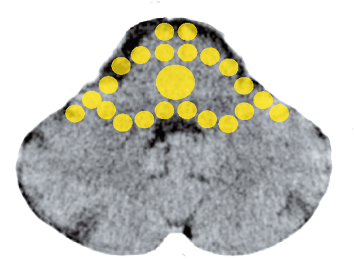
Enlargement of the thyroid, thyroid tumor
(adeno-ca, autonomous adenoma, toxic lumps)1
Hyperfunction of the thyroid (hyperthyrosis, Grave‘s disease)
Same SBS as above.
| Phase | Conflict-active phase, usual persistent-active conflict. Increased thyroid hormone production caused by an increase in thyroid cells (adeno-ca). Symptoms: usually goiter, accelerated metabolism, ravenous appetite, warm and moist reddened skin, increased pulse, bulging eyes (exophthalmia), and wide open eyes, often weight loss due to high energy requirement, sensitivity to warmth, sleep disturbances, and lack of concentration. |
|---|---|
| Note | In the active—phase of the corresponding SBS, the thyroid hormone value goes up temporarily. By an SBS of the thyroid excretory ducts, there is also a slight increase in the amount of the thyroid hormone in the active—phase. |
| Therapy | Find out what the conflict and conditioning are and, if possible, resolve them in real life (see above). Questions see: p.146. Avoid stimulants, such as coffee, black or green tea, iodized salt, iron preparations, and long sunbaths. |
Acute inflammation of the thyroid (thyroiditis)
Same SBS as above.
| Phase | Repair phase — degradation of thyroid tissue. Pain, reddening, swelling, possibly mild fever and night sweat. Even higher thyroxin levels temporarily due to the disintegration of the thyroid growth. |
|---|---|
| Therapy | The conflict is resolved. Support the healing process. Lymph drainage massages (see p. 68), curd cheese compress, apply cold compresses (e.g., cloth with salt water). MMS (see p. 68). Questions see: p.146. |
Hypofunction of the thyroid (hypothyroidism, myxedema)
Same SBS as above, if a thyroid inflammation took place. If not, an SBS of the thyroid excretory ducts is probably in progress (see next page).
Symptoms: delayed development (in childhood), weakness, apathy, fatigue, sensitivity to cold, lack of appetite, constipation, dry, doughy, puffed-up skin (myxedema), sunken eyes (endophthalmus), reduced sweat production, slowed pulse and reflexes, low blood pressure, shallow breathing, weight gain, and high blood cholesterol levels.
| Phase | Persistent repair or the condition thereafter. Excessive degradation of the thyroid tumor > falling of the thyroid values to levels under the norm > under-functioning of the thyroid. |
|---|---|
| Note | In the repair phase of the corresponding SBS, the thyroid hormone value sinks temporarily. |
| Therapy | Find out what the conflict and conditioning are and, if possible, resolve them in real life so that the persistent repair comes to an end. |
| Questions | see: p.146. Medication with a thyroid substitute, if thyroid hormone production does not restart after the conflict resolution. However, if one begins medication early, the thyroid reduces production even more so that there is no way back > life-long medication is necessary. This is also true if one has opted for a total OP. |
Chronic inflammation of the thyroid (Hashimoto‘s thyroiditis)
According to CM, Hashimoto‘s is an autoimmune condition. Such a condition is not possible according to the 5 Biological Laws of Nature (see immune system, p. 25).
However, the disease pattern is real: It is characterized by a period of short, usually unnoticed hyperfunction, followed by lasting subfunction.
Dr. Hamer assigned Hashimoto’s disease to the SBS of the thyroid excretory ducts (see below). In my opinion, this is not correct because these excretory ducts are only relevant during the body’s development, not in adulthood, i.e., nothing is transported in the excretory ducts anymore.
| Phase | Due to recurrent conflicts, thyroid tissue melts away. As a result, the thyroid gland becomes smaller or large areas, more or less, are replaced by functionless connective tissue. |
|---|---|
| Symptoms | Tendency for constipation, listlessness (possibly diagnosed as depression), hair loss, dry skin, slow pulse. The TSH level is usually elevated, but sometimes also lowered. |
| Questions | See: p.146. |
| Therapy | See previous and see Remedies for the thyroid p. 149. If a recurrent conflict has caused the loss of most of the thyroid tissue or converted it to connective tissue, and thyroxine levels do not recover after conflict resolution and the implementation of the above measures, thyroxine replacement therapy is indicated. |
1 See Dr. Hamer, Charts pp. 20, 30
Right
cyst
Left
cyst
Goiter without thyroxin level change
(euthyroid goiter, euthyroid cyst, medial neck cysts)1
| Conflict | Powerlessness or frontal-fear conflict. According to my experience, when it comes to powerlessness conflicts, the issue of being “too slow” always has something to do with it. Explanation: Powerlessness is a feminine-passive reaction to an approaching danger. One has to do something quickly, but feels powerless/helpless. One cannot stop something bad from happening. Time is running out. One doesn’t do anything (but must) and is tense for this very reason. Or frontal-fear conflict: fear of approaching, inescapable danger coming towards us and we cannot evade it (see: p.181). |
|---|---|
| Examples | Powerlessness conflict: (For examples of frontal-fear conflict; see: p.181 and 207.) “Something needs to be done urgently, but no one is doing anything!“ “My hands are tied. I cannot do anything.“  Over the course of a year, an intelligent, 9-year-old schoolgirl develops a moveable nodule just under the larynx. In the hospital, she is diagnosed via ultrasound with a 2 x 3 centimeter cyst (CM: “medial neck cyst“ or “lymph angioma“). Conflict history: about three years before that, the little patient learns that her father is having an affair with her mother‘s best friend. After much “back and forth,“ her parents separate = powerlessness conflict on the part of the daughter. The little one longs to bring her father home to her mother. However, in this situation, she is helpless. Following two years of conflict activity, she slowly comes into healing, as it finally becomes clear to her that her father and mother no longer live together. She is fond of them nonetheless. Due to recurrences (“Why aren‘t Mom and Dad together anymore?“), the medial neck cyst described above develops. As the mother comes to understand that one thing is linked to the other, she wants to make a “family-campfire ritual“ where the father is also present. (Archive B. Eybl) Over the course of a year, an intelligent, 9-year-old schoolgirl develops a moveable nodule just under the larynx. In the hospital, she is diagnosed via ultrasound with a 2 x 3 centimeter cyst (CM: “medial neck cyst“ or “lymph angioma“). Conflict history: about three years before that, the little patient learns that her father is having an affair with her mother‘s best friend. After much “back and forth,“ her parents separate = powerlessness conflict on the part of the daughter. The little one longs to bring her father home to her mother. However, in this situation, she is helpless. Following two years of conflict activity, she slowly comes into healing, as it finally becomes clear to her that her father and mother no longer live together. She is fond of them nonetheless. Due to recurrences (“Why aren‘t Mom and Dad together anymore?“), the medial neck cyst described above develops. As the mother comes to understand that one thing is linked to the other, she wants to make a “family-campfire ritual“ where the father is also present. (Archive B. Eybl) A father receives a letter from the school informing him that his daughter is being expelled. The girl had been having repeated problems, but he hadn‘t expected an expulsion. (Archive B. Eybl) A father receives a letter from the school informing him that his daughter is being expelled. The girl had been having repeated problems, but he hadn‘t expected an expulsion. (Archive B. Eybl) a A girl is placed in a home from the age of 2 to 4 and sees terrible things there. E.g., bed-wetters have their wet underpants pulled over their heads in the morning. She herself is not affected, but she cannot defend herself against the meanness of the bigger children. = Powerlessness conflict. A 1.5 cm/½ in. cyst develops. By recognizing the connections, she succeeds in resolving the conflict permanently. (Archive Antje Scherret) a A little girl suffers a powerlessness conflict because her parents are constantly fighting (the exact time of the conflict is unclear). When she is 13, her father cheats on her mother. A few months later he leaves the family. (Archive B. Eybl) |
| Conflict-active | Squamous epithelium tissue degradation (ulcer) in the thyroid excretory ducts, which are blocked in the meantime. Simultaneous slacking of the smooth muscle located underneath (ring-shaped portions) > increase in width. Painful pulling, slightly raised thyroid hormone production due to a functional linkage with the glandular tissue. |
| Bio. function | Widening of the ducts for better release of the thyroid hormones. > The individual becomes faster. |
| Repair phase | Restoration of the squamous epithelium, swelling but no pain, cyst development. This swelling is (also) diagnosed as a goiter or as a so-called medial neck cyst. In the case of syndrome (see p. 277ff), very large cysts develop. As these are not thyroid hormone producing cells (thyreocytes), but rather squamous epithelium cells, the level of thyroid hormones in the blood usually remains normal. (In CM: “euthyroid cysts of the thyroid“ or “retrosternal or mediastinal thyroid cysts.“) Possibly breathing difficulties due to swelling. Most often a recurrent conflict. |
| Questions | Symptoms/diagnosed when? (Conflict previous). Which situations am I powerless to face? Where do I think I have to do something? Which family pattern does my behavior prolongate? |
| Therapy | The conflict is resolved. Support the healing. In case of recurrences, find out what the conflict and conditioning is. Resolve the refugee conflict, if one is active (see: p.277). Guiding principles: “I do not have to feel that I am responsible for everything.“ “I entrust it to God’s hands.“ “Everything will be alright again!“ Bach flowers (see p. 59): rock rose, aspen, mimulus lymph drainage massages (see p. 68). Curd cheese packs, cold packs (e.g., cloth soaked with saltwater). Hildegard of Bingen: lovage-mixture special recipe. Spray the neck with colloidal silver, frankincense, and tincture of myrrh. OP, if the tumor causes problems due to size. |
1 See Dr. Hamer, Charts, p. 124

Tumor of the parathyroid gland (adeno-ca), increased parathyroid
hormone (PTH) levels (hyperparathyroidism) and increased calcium levels (hypercalcemia)1
| Conflict | Chunk conflict (see explanations p. 15, 16). Due to lack of sufficient muscle activity, not being able to get something (chunk) (right side) or expel something (chunk) not wanted (left side). Simply stated: One does not get something because of being too powerless, passive, inactive or lax. |
|---|---|
| Conflict-active | Hyperfunction — growth of a compact cauliflower-like (adeno-ca), of secretory quality. Increase in PTH producing cells = “hard goiter“ (struma) > increased production of PTH (hyperparathyroidism) > increase in the calcium level due to depletion of bone calcium. By longer conflict activity, this can lead to decalcification of the bones (fibro-osteoclasis). Possibly recurrent conflict. |
| Bio. function | Increase in muscle activity through raised calcium levels. |
| Repair phase | Function normalization, tubercular-caseating degradation of the tumor, normalization of the PTH level or encapsulation if bacteria are not present. Parathormone level too low (hypoparathyroidism) due to persistent repair (excessive tumor breakdown). |
| Note | Not only calcium levels in the blood that are too low, but also levels that are too high can point to hypocalcemia. |
| Therapy | Find out what the conflict and conditioning are and, if possible, resolve them in real life if still active. Calcium supplements should always be combined with vitamin D (organically bound). |
1 See Dr. Hamer, Charts pp. 20, 30
Hot lumps, cold lumps
Hot lumps, which can be determined through scintigraphy, are metabolically overactive areas of the thyroid tissue, usually associated with increased thyroid hormone levels. Cold lumps are metabolically underactive areas. They usually produce little thyroid hormones or none at all and thus, usually go hand in hand with underactivity.
Both SBSs come into question:
- SBS of the thyroid gland — recurrent conflict (see: p.145).
- SBS of the thyroid excretory ducts — recurrent conflict or persistent repair (see: p.147).
Those who seek answers in naturopathy will almost only find remedies for hypothyroidism (see p. 147). Only Anthony William, in his book “Heal Your Thyroid,” gives some recommendations for the thyroid gland in general:
- Avoid electrosmog, heavy metals, pesticides. Avoid eggs, milk products, gluten, canola oil, soy, corn, and pork.
- Preferred: apples, dates, figs, honey, bananas, pears, ginger, coconut, mango, nuts, oranges, papayas, pomegranates, kale, potatoes, cilantro, squash, zucchini, parsley, sesame seeds, asparagus, thyme, avocado, cucumbers, hemp seeds, garlic, turmeric, basil, berries, cauliflower, watercress, fennel, celery, lettuce, spinach, sprouts, sweet potatoes, tomatoes.
- Food supplements according to William: Vit. C, B12, D3, zinc, magnesium, selenium, spirulina, lobster kelp (red algae), cat’s claw, licorice root, L-lysine, barley grass juice extract, nettle leaves.
All experience reports on the organ system «Thyroid and Parathyroid» from the International Report Archive:
| Author | Title and Overview | Keywords | ||||
|---|---|---|---|---|---|---|
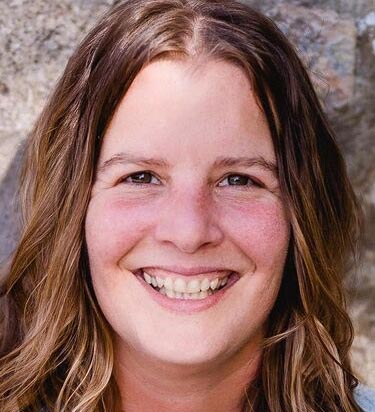 | 2025/08/16   The reason Sergej (name changed) consulted me for help was because of his panic attacks while driving. During the anamnesis, he reported that he could no longer drive a car or truck for more than about 15 minutes... | |||||
2024/05/19   After two years abroad, the young woman returned to Germany, which was very difficult for her, as she felt absolutely powerless to return to Germany: arguments with her parents, no apartment, no partner, no job - this situation represented a conflict of powerlessness for her... | Thyroid excretory ducts, gill arch ducts | |||||
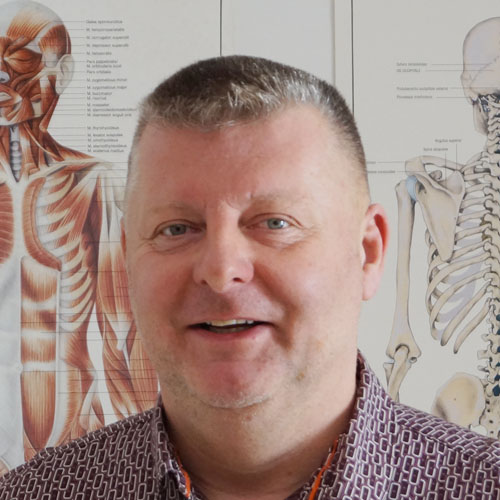 | 2023/08/26    This case describes the healing of an already advanced thyroid tumor with the conventional medical diagnosis: death.... and the resulting lung cancer. Which we have also got under control. | |||||
2022/08/05    | ||||||
2021/06/30    These are the testimonials (in brief) of the first seven successfully resolved allergies of the participants of our practice course "Resolving Allergies". The reports are available as text and video (the video is in german, but has english and spanish subtitles): 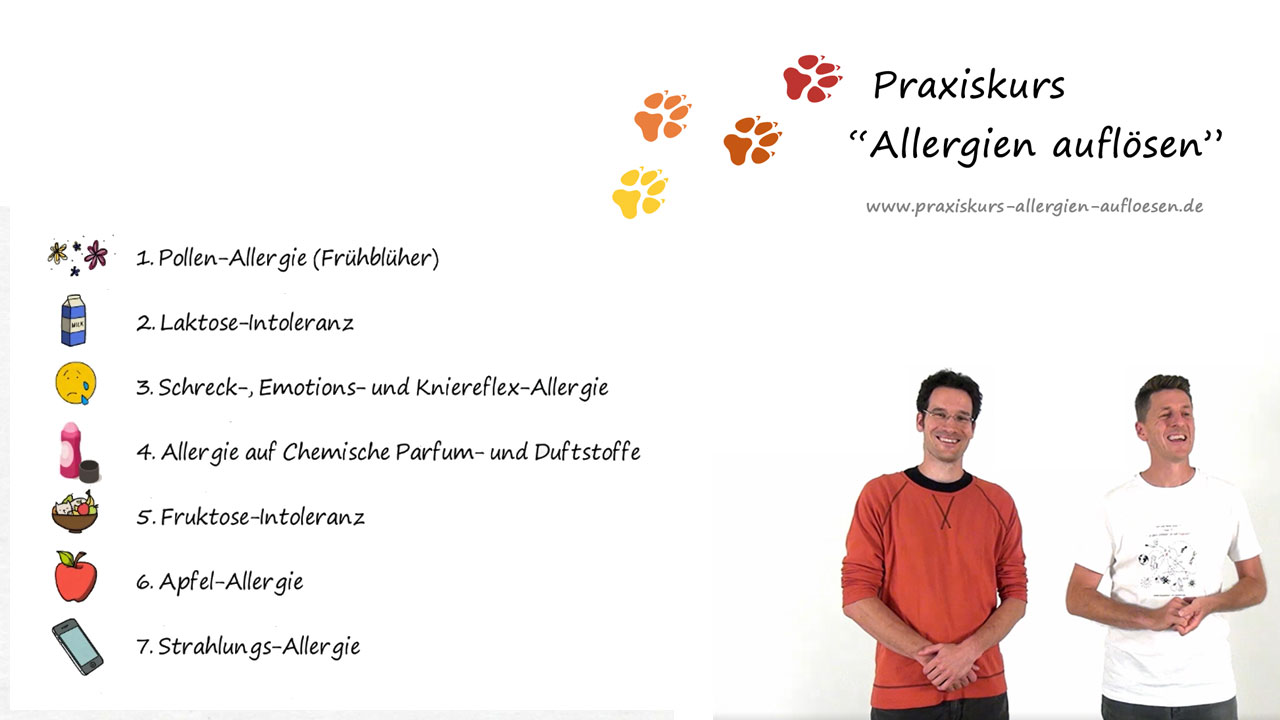 | Track, resolving allergies | |||||
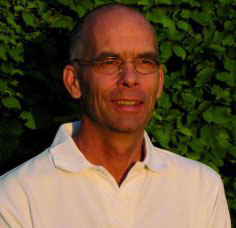 | 2020/03/08   The mother comes to my practice with Jakob. She tells me that her son can't be alone for a second - he follows her wherever she goes. She can't even leave a room without Jacob jumping up and following her. | Panic, Panik attack |
